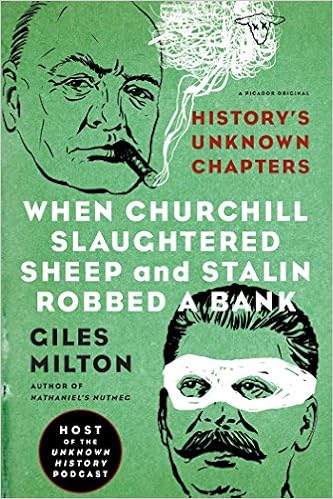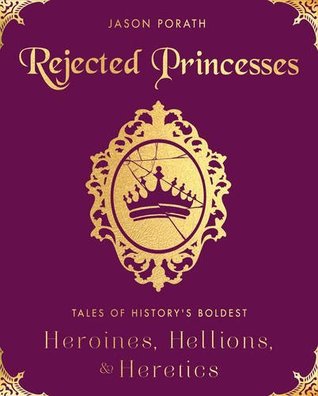 |
| Harper Perennial |
Tori Telfer
2017
The Summary
"In 1998, an FBI profiler infamously declared in a homicide, 'There are no female serial killers'--but Lady Killers offers fourteen creepy examples to the contrary. Though largely forgotten by history, female serial killers such as Erzsebet Bathory, Nannie Doss, Mary Ann Cotton, and Darya Nikolayevna Saltykova rival their male counterparts in cunning, cruelty, and appetite for destruction.
"With a feminist lens and a witty, morbidly humorous tone, Lady Killers dismisses easy explanations (she was hormonal, she did it for love, a man made her do it) and tired tropes (she was a femme fatale, a black widow, a witch), delving into the complex reality of female aggression and predation."
The Good
Honestly, I enjoyed this book far more than I probably should have.
There's something fascinating about female serial killers. Perhaps, I have been susceptible to the idea that women are softer, gentler, and less likely to kill, despite knowing to the contrary, and find myself aghast that these ladies existed; perhaps, I'm just fascinated by the idea of off-kilter women surviving in any way possible.
Either way, I was absolutely hooked by Lady Killers.
I had a handful of chapters that I really enjoyed: "The Sorceress of Kilkenny," which featured Alice Kyteler who was accused of being a witch and killing four husbands; "Vipers," featuring Raya and Sakina, prostitutes who owned a brothel murdered several young women (and possibly others) in Egypt after World War I; "Wretched Woman," which focused on Mary Ann Cotton, who killed several of her own children, several of her husbands' children, several husbands (all, but one) and lovers and, quite probably, many more; and, "The Tormentor," Darya Nikolaevna Saltykova, which you can read more about later.
These were just the most fascinating chapters for me; however, every chapter was thought-provoking and captivating in its own right. Tori Telfer does a fantastic job as an author, creating a thoroughly researched and interesting book on an increasingly morbid topic. She writes with a sense of humor, but also a deep appreciation of forgotten and/or misinterpreted history.
I especially appreciated Telfer's dedication to telling the truth or, at the very least, getting all her facts straight. Telfer cuts through the terrible rumors and unfounded accusations that surround these women, dismissing what she cannot prove, and creates a believable portrait of each individual.
Elizabeth Bathory, for instance, is surrounded by a dark mythos of blood, terror, and sex. She has become, on numerous occasions, a scandalous icon for debauchery and murder, a female counterpart to the wildly popular story of Dracula. So much of what we know of her is unreal; however, Telfer makes an effort to humanize her, to reveal her a real person. Yes, she committed heinous crimes and, yes, she was no doubt a murderess, but Telfer tells the story of a woman (albeit, a deeply disturbed woman), rather than a vampire or a dark temptress as she's sometimes portrayed.
The Bad
No complaints.
The Ugly
It's a book about serial killers. It's going to be awful, horrible, gruesome, and macabre; it's going to have blood, gore, and violence--and all the other horrible things associated with cold-blooded killers. Don't go into this book thinking, "It can't possibly be that bad. It's not like it's Charles Manson or Jeffrey Dahmer, or someone like that."
Trust me, you're wrong.
These ladies are downright terrifying, just as much as any male serial killer. Many of them got away with killing for years, like the murderous women of Nagyrev or Nannie Doss, before they were discovered; some even avoided justice altogether, like Alice Kyteler and Kate Bender. They're killers, plain and simple, and they're frightening in their own right.
Perhaps one of the most frightening, in my opinion, was Darya Nikolaevna Saltykova. Darya was a Russian noblewoman who lived during the reign of Catherine the Great and she killed, at the very least, 138 people (mostly women) during her lifetime. She was inventive in her murders and, at times, she would kill someone with her bare hands if she didn't think anyone else would or could do it. And, as the author points out, she showed zero remorse:
"So Darya killed and killed again, confident in her impregnability and furious at her serfs for each petty mistake, for getting in her way, for being her responsibility, for existing. If she was a god, then her serfs were her pitiful playthings. She could make them clean; she could make them cook; she could make them scream and bleed and beg. [...] 'I am my own mistress,' she cried. 'I am not afraid of anyone.' This belief that she was superior, unassailable, and even consecrated by the law was integral to her sense of self. Perhaps she killed to prove one simple point: that she could."
To me, Darya is absolutely terrifying.
















